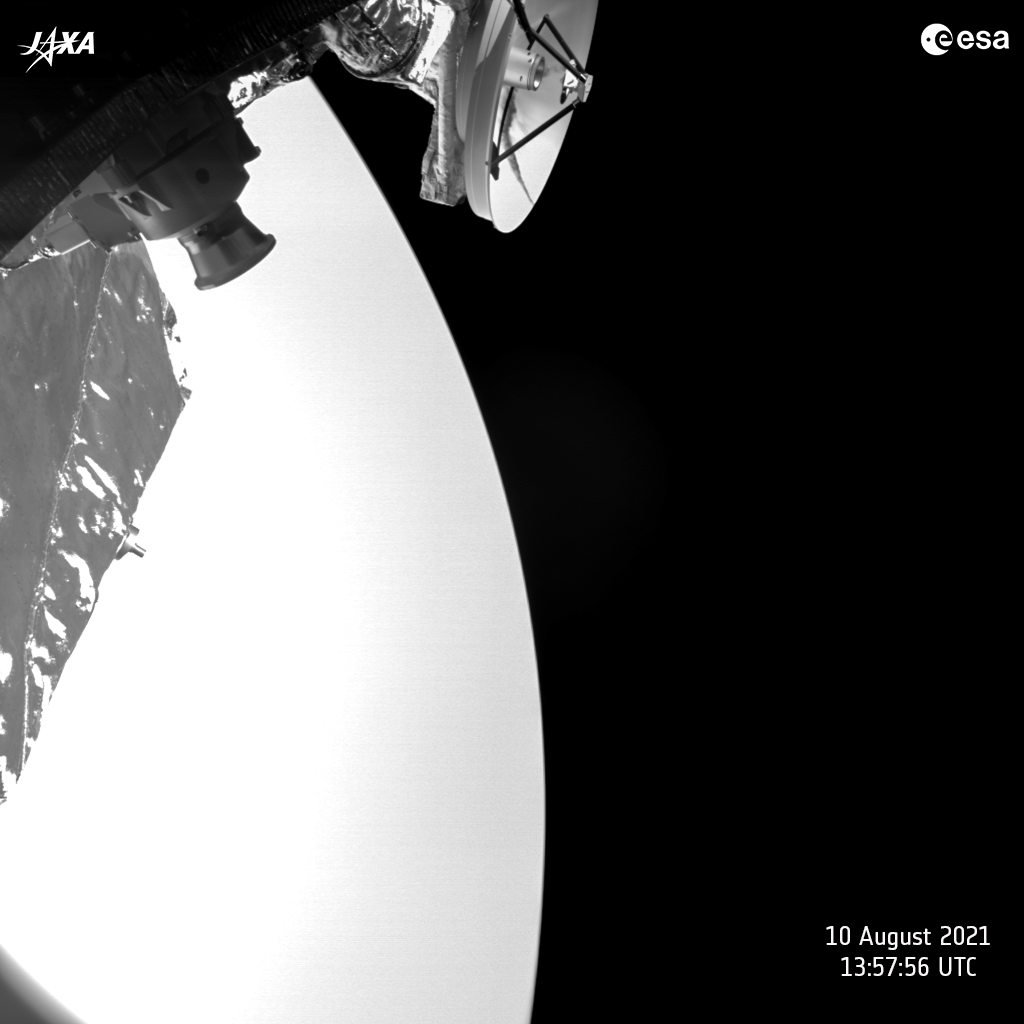Dancing around Venus
A close flyby of the planet Venus between 9 and 10 August, led to an (almost) meeting of the Euro-Japanese BepiColombo and the Euro-American Solar Orbiter (SOLO) spacecrafts. Venus isn’t the final destination of either mission but the approach to the planet made it possible to collect valuable data for future studies.
“The almost-contemporary flyby at Venus of Solar Orbiter is a great opportunity to have more data and an additional point of view of the Venus environment. We’ll take advantage of it!” says Valeria Mangano, coordinator of the ESA working group on Venus flybys of the BepiColombo mission.
SOLO will use Venus’s gravity multiple times to get closer to the Sun and to change direction to get a good look at the Sun’s poles (a first for a spacecraft), while BepiColombo needs gravitational help from Earth, Venus and Mercury itself to reach its destination. BepiColombo, named after the Paduan mathematician, physicist, astronomer and engineer Giuseppe Colombo, is the result of the collaboration between the European Space Agency (ESA) and the Japanese Space Agency (JAXA) with European leadership. The aim of the mission is to unveil the deepest secrets of Mercury, the planet closest to the Sun and one of the least explored in the Solar System. Four out of the sixteen instruments and experiments on board BepiColombo were built by Italian industry and the Mercury Planetary Orbiter carries onboard the Italian instruments ISA, SERENA and SIMBIO-SYS, and the MORE radio-science experiment.
ESA’s SOLO spacecraft encountered Venus at an altitude of 7995 km 33 hours earlier than BepiColombo and on the opposite face of the planet. Its main mission is to observe the surface of the Sun and study the changes that occur in the solar wind that is emitted at high speed by our star. Among its ten instruments, SOLO carries Metis, the innovative coronagraph born through an international collaboration led by the Italian National Institute for Astrophysics (INAF) and supported by the Italian Space Agency (ASI), involving several universities in Italy and research institutes in the world.
Approaching Venus has allowed the two spacecraft to make several science investigations of the planet’s atmosphere and its induced magnetosphere and ionosphere. During its flyby, the Solar Orbiter Heliospheric Imager (SoloHI) was able to capture a view of the planet Venus’s nightside, which appeared as a dark semicircle surrounded by a gleaming, bright crescent of light. The day after and a few minutes after BepiColombo’s closest approach of 552km, the Mercury Transfer Module’s Monitoring Camera 2 took this beautiful black-and-white snapshot with the high-gain antenna and part of the body of the spacecraft visible in front of Venus.

The Venus Flybys Working group (VFBWG, here the relative ESA webpage), Valeria tells us, aims to promote discussion on Venus science as related to the BepiColombo passages nearby the planet, and also by taking advantage of some of the complementary observations from Earth-based telescopes and by amateur astronomers. Europlanet 2024 RI is actively involved in this, by supporting and encouraging the amateur observations through a campaign coordinated by Ricardo Hueso and Itziar Garate-Lopez from UPV/EHU in Spain. You can find some of the images collected after the first BepiColombo Venus flyby last October on the Planetary Virtual Observatory and Laboratory (PVOL) website. The working group also supports coordination of Venus observations by BepiColombo and other spacecraft. JAXA’s Akatsuki spacecraft, for instance, is now in orbit around Venus and joint observations of the plasma environment surrounding the atmosphere of Venus will enable, again, new insights concerning the planet that were not previously achievable.
Apparently the data for the public will be coming through and continuously being uploaded to the ESA’s dedicated webpage but it will take some time.
“Now that the flyby at Venus has passed, we are all working hard at the data analysis, interacting among the teams to gain the most comprehensive view of what we measured. This is at the same time the most stressful and exciting moment of the flyby, when you realise if all the efforts we did of planning the ‘best possible measurements’ really worked and will bring us results or not,” Valeria Mangano continues.
Even more exciting is that all the data collected during the flybys will provide useful inputs to ESA’s future Venus orbiter, EnVision, which is scheduled to launch to Venus in the 2030s.
It seems that the heavens will continue to give us great, emotional highlights in the years to come and we can do nothing but wait, anxiously, for the next planetary dance. The next appointment is for the night of 1-2 October, when BepiColombo will finally see its long dreamed-of destination, making its first of six flybys of the planet Mercury.

